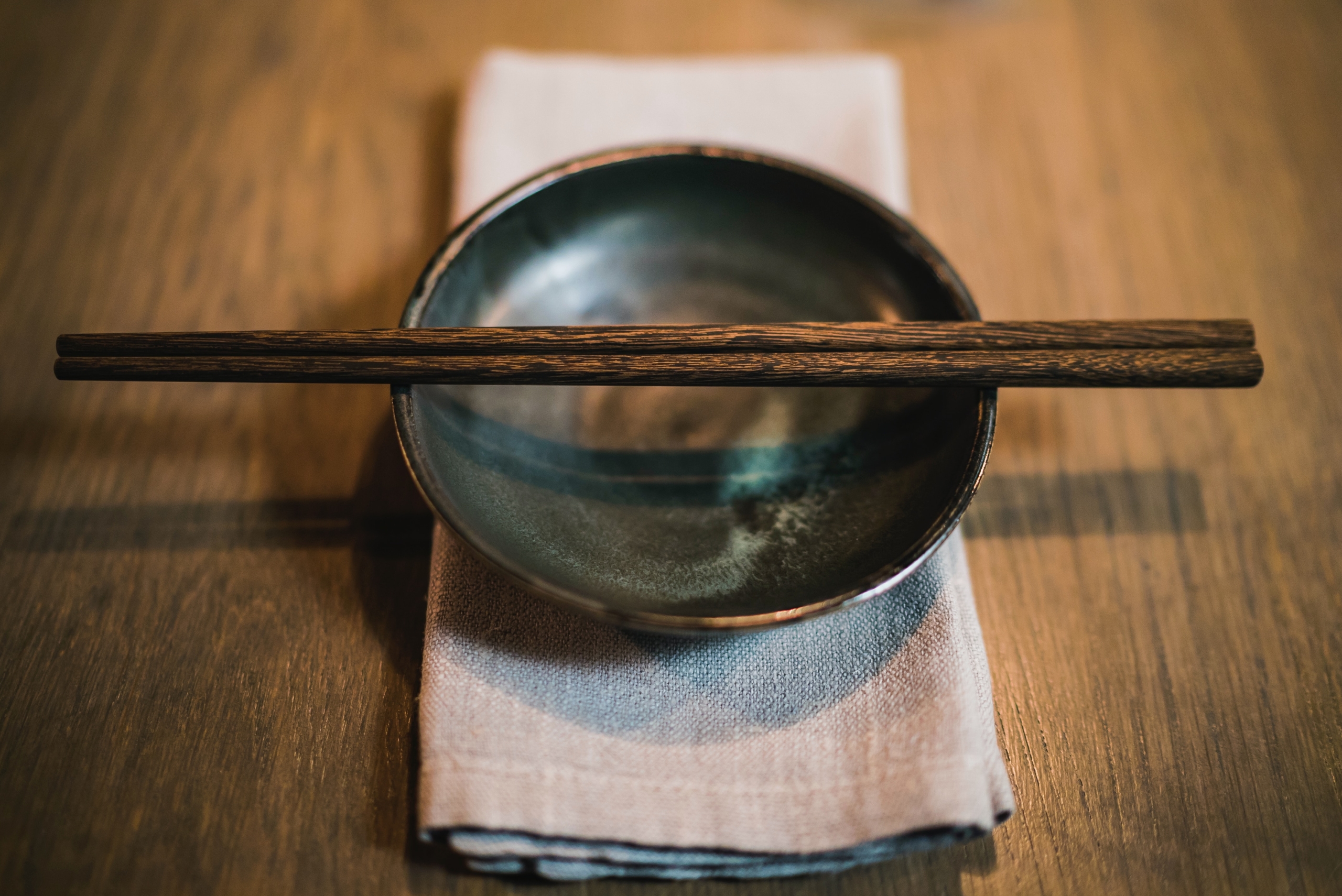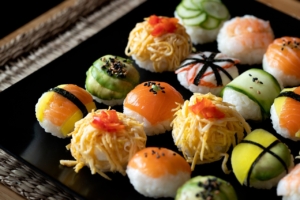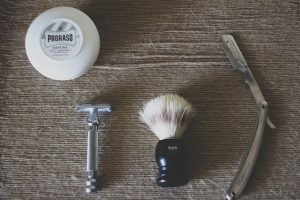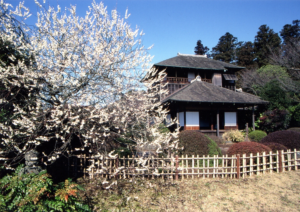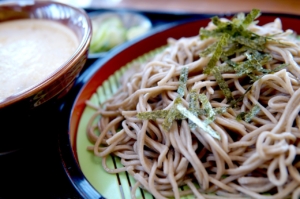Do you often have the opportunity to eat with chopsticks?
I frequently use not only chopsticks but also forks and knives, though I prefer using chopsticks. When cooking, I also use long cooking chopsticks called saibashi (菜箸) almost every day. Chopsticks are safe because they keep your hands away from hot oil or water, and they also make it easy to pick up small items (which is because we’re used to them).
My child also like using chopsticks, especially having crisps to avoid getting their hands dirty.
Once you get used to them, chopsticks are incredibly convenient.
Just like in the West, Japan also has table manners. During the Kamakura period, the etiquette of tea ceremony and dining spread among samurai, emphasizing manners and respect. By the Edo period, dining manners had become common among the general public, and proper use of chopsticks and table setting became the norm.
Proper use of chopsticks became particularly important, and actions considered impolite (discussed later) were prohibited. Additionally, under the influence of tea ceremony and kaiseki cuisine, meal formats like “one soup, three dishes” were established.
Even in modern Japan, using chopsticks correctly, eating quietly, and saying the words of gratitude “itadakimasu” and “gochisousama” are considered essential dining manners.
In the UK, I have seen some locals do have opportunities to use chopsticks as well. This might be in Japanese restaurants, Chinese restaurants, Korean restaurants, or even at home when making Asian food or having Chinese takeaways.
If you travel to Japan, visit a Japanese restaurant, or dine with Japanese people, those around you would likely appreciate it if you use chopsticks properly. This is because Japanese etiquette expresses a deep respect for food.
Below, I’ll talk about the correct way to hold chopsticks, basic chopstick manners, and behaviours to avoid. If you’ve ever wondered how to hold chopsticks or whether there are any manners related to how you use them, this might be helpful for you.
How to Hold Chopsticks
First, let’s talk about how to hold chopsticks properly.
Yes, before discussing manners related to chopsticks, it’s important to talk about how to hold them correctly.
If you find it troublesome, following your own style of manners is fine. However, if you’re around Japanese people, you might need to be a little careful. This is because, while they may not say anything, Japanese people naturally tend to notice how others hold chopsticks.
When I watch Japanese YouTube channels, I often see YouTubers eating something using chopsticks in their videos. If their chopstick holding isn’t graceful, I frequently see comments like “your way of holding chopstick isn’t good,” “that should be fixed,” or “you can correct it in just a few months, so please try.”
Japanese people will likely be lenient if they see a foreign tourist not being able to hold chopsticks properly, because they don’t expect the person to be good at it. However, if you can hold them well, Japanese people will probably compliment you with “you’re really good at it!” even more than they would for a fellow Japanese.
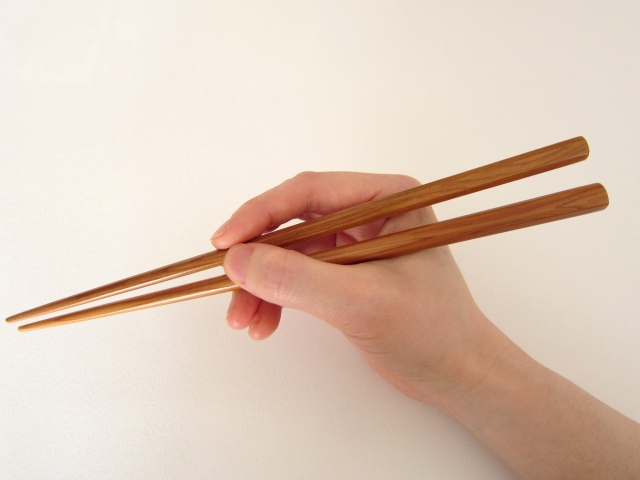
To hold chopsticks, grip them slightly above the middle to give an elegant impression.
- First, place the lower chopstick between the base of your thumb and index finger, resting it against the side of your ring finger’s nail.
- Fix the lower chopstick in this position, keeping your little finger alongside your ring finger.
- While maintaining this position, use your thumb, index finger, and middle finger to hold the upper chopstick as you would a pencil.
Now, can you move only the upper chopstick? Keep the lower chopstick still and freely move the upper chopstick to eat.
Chopsticks are tools for picking up food and bringing it to your mouth, so it’s natural for the tips to get dirty. In Japanese table manners, it is considered good practice to minimize the dirtiness of the chopsticks. Generally, it is said that the tips should remain clean up to about 3 centimetres from the end of the chopsticks.
Picking Up Chopsticks (right-handed)
Now, it’s about “how to pick up chopsticks.
You might think, “wait, there’s etiquette for picking up chopsticks, too?”
Yes, that’s right.
If it feels cumbersome, you don’t have to follow it. But doing it naturally looks elegant!
The basic way to pick up chopsticks is just a 3-step process (for right-handers): “Right, Left, Right.”
- Pick up the chopsticks with your right hand from the middle and lift them to chest height.
- Support the tips of the chopsticks from underneath with your left hand.
- Slide your right hand upwards towards the top of the chopsticks, then move downwards, stopping at the position where you should hold them (closer to the top).
- Let go with your left hand and start eating.
Holding a Plate or Bowl While Eating
In Japanese table manners, it is considered polite to lift small plates or bowls to chest height while eating.
But you might wonder, “I’m already holding chopsticks, and now I have to hold a plate or bowl, too? How do I lift both at the same time and still eat?”
This is the formal etiquette, but it does require a bit of practice. Don’t worry too much, as there are some Japanese people who can’t do this or are unaware of the custom.
- First, hold the bowl with both hands.
- Then, release your right hand from the bowl and pick up your chopsticks from the middle.
- Insert the tips of the chopsticks between the ring and little fingers of your left hand, taking care not to drop the bowl. Yes, I know it’s tricky.
- While holding the bowl and the tips of the chopsticks securely with your left hand, slide your right hand to the upper part of the chopsticks and then move it underneath to the lower part. Stop when you reach the correct position to hold the chopsticks.
- Finally, release the chopstick tips from your left hand and start eating.
Placing Chopsticks
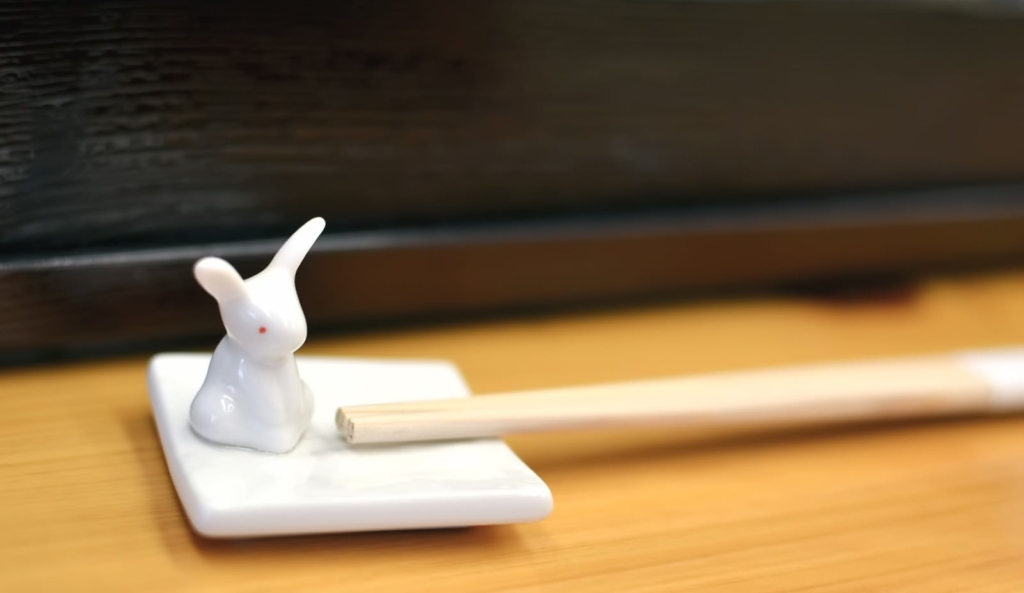
Just like when picking up chopsticks, there are manners to observe when placing them down. Placing chopsticks follows the reverse order of the steps mentioned above.
Currently, you are holding the chopsticks in your right hand.
- With your left hand, grasp the tips and the middle section of the chopsticks from below.
- In contrast to picking them up, slide your right hand from the bottom of the chopsticks to the top and move your fingers to the middle section.
- Release your left hand and gently place the chopsticks down.
Placing Chopsticks During a Meal
There are also manners to observe when you want to place your chopsticks down during a meal. It may feel a bit tedious, but doing this makes you appear graceful.
First, it is considered rude to place your chopsticks on a bowl, cup, plate, or glass. It is also not acceptable to place them directly on the table.
In traditional Japanese dining settings, there is often a chopstick rest available, so you should use that. If there is no chopstick rest and your chopsticks came in a paper bag, you can place them on top of the bag, or fold the chopstick wrapper to use it as a makeshift chopstick rest.
When you finish eating, you can leave your chopsticks on the chopstick rest or return them to their wrapper.
Using Disposable Chopsticks
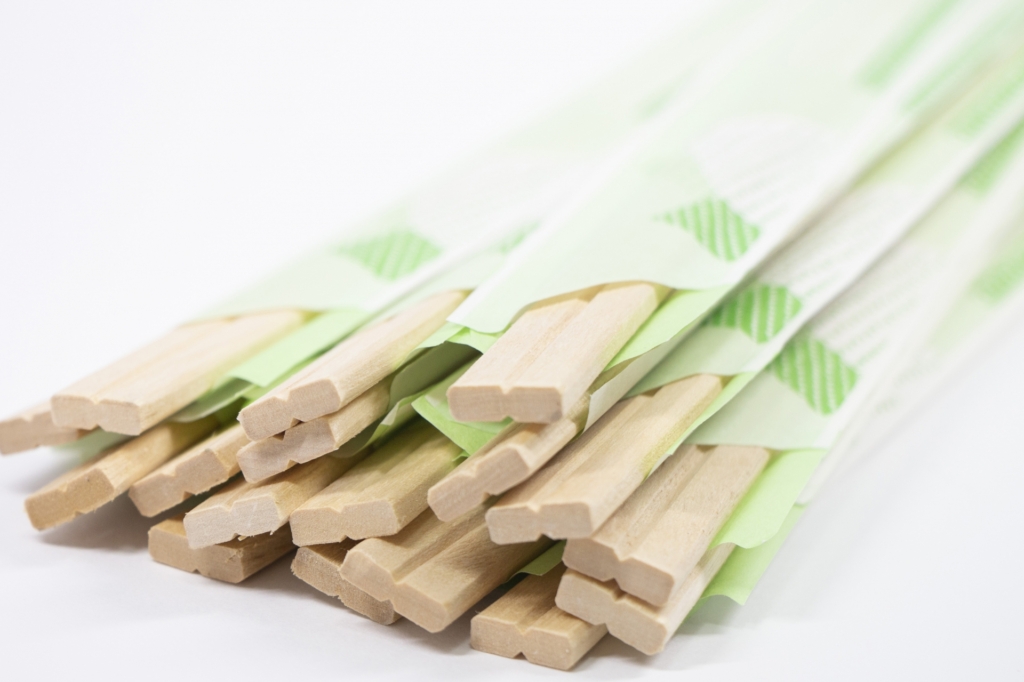
Disposable chopsticks, called “waribashi (割りばし),” are usually connected at the top and are often meant to be separated by you before use. Some versions come pre-separated.
- When breaking the disposable chopsticks, be careful to break them forcefully enough to prevent any splinters from falling into your food.
- Pull the chopsticks towards you and quietly break them on your lap.
- Grasp the chopsticks slightly below the middle and slowly pull them apart evenly in both directions to separate them cleanly.
If the disposable chopsticks are splintered, it is considered bad manners to rub them against each other to smooth the edges (see the “cutting chopsticks” rule).
In the popular American TV drama “Sex and the City,” I have seen a scene where the main character uses chopsticks at a sushi restaurant. After separating her disposable chopsticks, she rubbed them together over her sushi to smooth them out. American viewers may not have thought much about that gesture. However, if Japanese people were watching this drama, they might have worried about splinters falling onto the sushi and felt uncomfortable seeing that manner.
Some people also break chopsticks with their mouths or hands. This behaviour is often seen among Japanese men, but it is also considered bad manners.
After finishing your meal, return the chopsticks to their original bag. When doing so, insert them about halfway and fold the bag diagonally backward. This signals that the meal is finished and that the chopsticks have been used.
Improper Use of Chopsticks in Japan

In Japan, there are ways of using chopsticks that are considered inappropriate, collectively referred to as “kirai-bashi (嫌い箸)” in traditional terms.
Below is a list of “kirai-bashi.” These actions not only look clumsy but are also believed to bring bad luck and evoke associations with funerals in Japan.
| Sashi-bashi(刺し箸) | Sticking chopsticks in food like a fork |
| Sashi-bashi(差し箸) | Pointing somebody using chopsticks |
| Tate-bashi(立て箸)Hotoke-bashi(仏箸) | Putting chopsticks in rice, making them straight up. This is how to offer food for the dead. That reminds other people of a funeral. |
| Utsushi-bashi(移し箸)/Hiroi-bashi(拾い箸)/Hashi-watashi(箸渡し) | Transferring food from chopsticks to other people’s chopsticks. This is the way of picking bones in the crematorium in Japan. |
| Furiage-bashi(振り上げ箸) | Raising up chopsticks |
| Furi-bashi(振り箸) | Shaking off the juice or soy sauce on chopsticks |
| Yose-bashi(寄せ箸) | Using chopsticks to draw or move a plate |
| Tataki-bashi(たたき箸) | Hitting a place with chopsticks to make a noise |
| Nigiri-bashi(にぎり箸) | Grabbing both chopsticks with your palm to eat. It not only looks bad but it also it means an attack. |
| Seseri-bashi/Youji-bashi(せせり箸/楊枝箸) | Cleaning the teeth with chopsticks instead of using a toothpick |
| Sora-bashi/utsuri-bashi(空箸/移り箸) | Releasing the food that you once picked, and eating a different food. |
| Neburi-bashi(ねぶり箸) | Licking chopsticks |
| Mogi-bashi(もぎ箸) | Removing the food, such as rice, on chopsticks with your mouth |
| Mawashi-bashi(回し箸) | Stirring a soup dish with chopsticks over and over |
| Saguri-bashi(探り箸) | Searching food using chopsticks in a dish, and pick up what you want |
| Chigiri-bashi(ちぎり箸) | Having one chopstick in each hand and cutting food |
| Namida-bashi(なみだ箸) | Dripping juice from the food that you are holding with chopsticks |
| Mayoi-basji(迷い箸) | Wondering which food you pick, hovering your chopsticks over the dishes |
| Futari-bashi(二人箸) | Grabbing the same food with chopsticks by 2 people |
| Kami-bashi(噛み箸) | Biting the tip of chopsticks |
| Kaki-bashi(かき箸) | Scratching your head or body using chopsticks. It is unsanitary and dangerous. |
| Age-bashi(あげ箸) | Raising chopsticks above the mouth while eating |
| Kakikomi-bashi(かきこみ箸) | Putting the bowl to your mouth, and pouring the food into your mouth with chopsticks |
| Watashi-bashi(わたし箸) | Pass chopsticks on tableware across a plate or a bowl during a meal. That means “finished” or “not tasty”. |
| Chigai-bashi(違い箸) | Using chopsticks each of which is a different type or a different length |
| Oshitsuke-bashi(押しつけ箸) | Press the rice of a bowl to make it easier to eat |
| Oshikomi-bashi(押し込み箸) | Filling up a lot of food in your mouth |
| Sakasa-bashi(逆さ箸) | To use chopsticks upside down. Some Japanese do this to take a portion of food so that the tips of their chopsticks in use won’t touch the food in big dishes, but this is not good manners |
| Kasane-bashi/Hashi-namari(重ね箸/箸なまり) | To keep eating the same dish all the time |
| Mochi-bashi(持ち箸) | Holding chopsticks and a rice bowl in the same hand at the same time |
| Yoko-bashi(横箸) | Scooping food with aligned chopsticks |
| Kosuri-bashi(こすり箸) | Rubbing sharp wood chips to make disposable chopsticks smooth. Yes, it is dangerous to use them with wood chips on. Even the main character in a drama called “Sex and the City”, was rubbing hers in a sushi restaurant. But, this means to tell the restaurant “This place only serves cheap and bad quality chopsticks.” You can just remove any chips by hand. |
